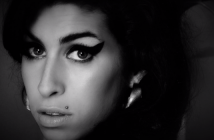Editor’s Notes: The following review is part of our coverage for TIFF’s Dreaming in Technicolor. For more information on this TIFF film series visit http://tiff.net and follow TIFF on Twitter at @TIFF_NET.
An expressionistic fairy tale, The Red Shoes (1948) takes filming theater to new heights by using cinematic techniques in its rendering of performed fantasy. By doing so, the uncanny, somewhat haunting qualities of Hans Christian Andersen’s tragic fairy tale are made more deeply palpable and affective. An experiment in cinematic techniques, the film shows how through film, and the manipulation of recorded time, one can transform the performing arts.
An experiment in cinematic techniques, the film shows how through film, and the manipulation of recorded time, one can transform the performing arts.
The Red Shoes certainly takes note from German expressionism. A highly expressionistic atmosphere is created by high key lighting, shadows, and deep contrast between figures and backgrounds. Canted angles and sometimes grotesque imagery are further used to enhance the slightly disturbed atmosphere. For example, during the first ballet performance, the conductor’s face, brightly lit by stage lights, appears a vampire-like white. He is a figure comparable to Murnau’s Nosferatu.
The film is as expressionistic as it is performative. Dramatic emphasis is placed on almost everything, from the mise-en-scene to the cinematography to the actors’ performances. This works both for and against the film. As cinema, the dramatic emphasis comes off rather awkward and unjustified. Emphasis is required for theater and other performing arts. It is used to express theme and emotion. These elements are more obvious in cinema, which gives a closer view of the actors and furthermore may use cinematic techniques to convey emotion. For this reason, when a character comes out of the shadows, musicians play in the dark, and actors’ storm about, they create much of a caricature of themselves. In a sense, this is perhaps what the filmmakers were going for, as the film eventually melds film and the ballet together, turning it into a play within a play; however, it makes much of the film, particularly its first half, difficult to believe.
By far the most cinematic and critically acclaimed part of the film is the performance of The Red Shoes. Virtually the entire ballet is filmed, using a number of cuts, long takes, dissolves, and sped/slowed motion to transform the performance into a surreal work of cinematic art.
Once the characters begin preparing The Red Shoes, the film gains a sense of direction. The characters and their roles begin to take shape, and the viewer thus comes to relate to their humanity. Up until this point, they are rather without personality or story. Craster (Goring) is a great composer, Page (Shearer) a great dancer, and Lermontov (Walbrook) a great visionary. As the Red Shoes infects their lives, however, it changes them, giving them personality and creating a more captivating story. Craster falls in love, Page becomes a sensation, caught between love and glory, and Lermontov becomes obsessed with glory. Their tug of war an obvious metaphor of Andersen’s character in the fairy-tale, the film becomes a metonymic display of the tragedy seen in the play.
By far the most cinematic and critically acclaimed part of the film is the performance of The Red Shoes. Virtually the entire ballet is filmed, using a number of cuts, long takes, dissolves, and sped/slowed motion to transform the performance into a surreal work of cinematic art. In an impressive scene, Page dances in front of a shop window; inside, her reflection commits to dance to a different tune. A mirror and superimposition is used to create further reflections of her dancing, effectively offering up the sense of eternal dance—dance until death—that is expressed in the ballet. Certain shots, such as her dancing through a corridor of falling gauze sheets, are filmed in slow motion, bringing further emphasis to the tone and atmosphere of this moment. It is matched musically with a slowing down of tempo. Shadows are as integral to the play as to the film. As a result, the dance becomes rather surreal. At a certain point it becomes difficult to address whether the viewer is watching a film or a ballet, and if the character is still Victoria Page, dancer, or if she has truly transformed into the character of the play who falls victim to the red shoes. Effectively, by filming the ballet, Powell and Pressburger are able to bring out more of the surreal and fantastic elements of this haunting story. The Red Shoes is thus quite literally filmed theater, but with the intention not to reproduce but to enhance.
Soon after The Red Shoes is performed, Lermontov takes on the role of the proprietor, the man in the play which tricks the girl into dancing forever in the red shoes. Lermontov wishes to make her a great dancer, gives her every role, and effectively destines her to the same tragic fate as the girl in the story. The symbolism connecting play and film is quite obvious; to some extent it puts strain on the film by limiting what it is able to convey. Page is forced to choose between love and ambition. The film is thus fated to have the same melancholy ending as the story, in spite of the fact that the film is not complete fantasy, as the fairy tale is, and Victoria Page could very well have both her husband and a dancing career. She is forced not to make a figural choice, as the character in Andersen’s fairytale, but to make a literal choice. Effective as a dramatic element, this wavering between the surreal and real, the ballet and life prevents the film from having a perfectly singular vision. It causes the conveyed relationship between reality and fairy tale to become somewhat arbitrary, controlled, clumsy, and ultimately self-serving. Nevertheless, the film conveys a great work of art within it: the filming of the Red Shoes. For this, it is inimitably marvelous and influential.
The Red Shoes (1948) takes filming theater to new heights by using cinematic techniques in its rendering of performed fantasy.




